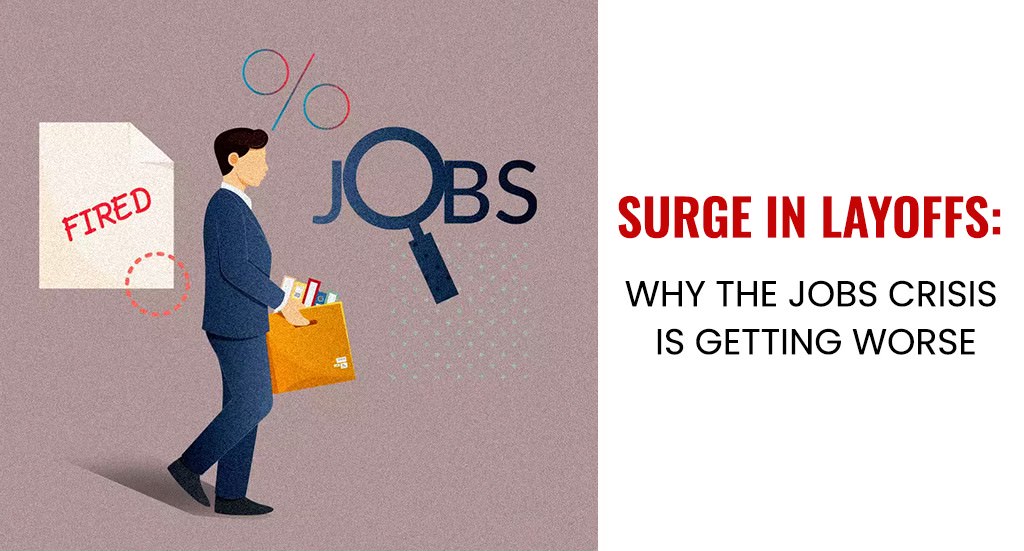In the early weeks of the new year, the tech industry is witnessing a concerning trend affecting its workforce.
According to a report released by the professional outplacement firm Challenger, Gray and Christmas, US companies announced a total of 721,677 job cuts last year, marking a significant 98% increase from the 363,832 layoffs reported in 2022. Notably, high-profile tech companies such as Meta and Amazon implemented workforce reductions during the same period.
This comes in the wake of a series of layoffs by tech giants such as Google and Amazon earlier this month, as they strive to reduce expenses following a hiring surge driven by the pandemic.
Experts caution that the problem could intensify in 2024 as the labour market continues to experience a decline, attributed to elevated interest rates and ongoing inflation.
Observing insights from experts, there are anticipations that this trend may further deteriorate in 2024, driven by a softening labor market amid elevated interest rates and persistent inflation. The report indicates that the tech sector will continue to feel the impact of factors such as AI integration, mergers and acquisitions, and the realignment of resources and talent. Within the job cut landscape, retail companies played a significant role by eliminating 78,840 positions, marking a substantial 274% increase from the preceding year. Additionally, healthcare and product manufacturers, including hospitals, also reduced 58,560 positions in 2023, reflecting a notable 91% increase from 2022.
Possible Reasons for Workforce Reduction:
- Financial Constraints (Cost-cutting): One of the primary catalysts for layoffs is financial strain. Various factors such as low profits, business losses, and sluggish production may lead companies to resort to cost-cutting measures. Employee salaries and benefits constitute a significant portion of organisational expenses. In a bid to save money, offset losses, enhance profits, or appease investors, companies may opt to reduce their workforce, a trend particularly evident in challenging economic conditions.
- Mergers and Acquisitions: Layoffs often accompany mergers, where one company or operating unit combines with another to form a new entity, or during buyouts, where a company or operating unit is acquired by another organisation. In these situations, the newly formed entity or acquiring company typically undergoes restructuring, involving changes in job positions, staffing requirements, job titles, and departmental structures. Workforce reduction becomes a common strategy during this transition as companies determine the number of employees to retain.
- Over Hiring: Excessive hiring during the pandemic contributed to the current spike in layoffs. With the widespread shift to online activities at the peak of the pandemic, technology usage soared. Remote work, online shopping, grocery delivery services, streaming, and virtual classes became the norm as people spent more time indoors due to quarantine measures. Tech companies, experiencing unprecedented levels of profitability from the surge in online engagement, initiated a hiring frenzy to meet the heightened demand. Believing that this trend would persist as the new standard, these companies expanded their teams and underwent rapid growth.
- Outsourcing: A major driver of job cuts is the outsourcing of tasks to other countries or regions with weaker currencies. For many companies, hiring full-time employees can be expensive, leading them to opt for outsourcing as a cost-effective alternative. Organisations often engage agencies with employees on their payroll to avail themselves of cheaper labour.
Experts anticipate the possibility of additional layoffs in the near future, but these predictions shouldn’t be interpreted as a bleak outlook for aspiring tech professionals affected by the situation. Despite potential challenges ahead, individuals in the tech field should view this period as an opportunity to enhance their skills. Regardless of the current wave of layoffs, the future will continue to heavily depend on technology.








